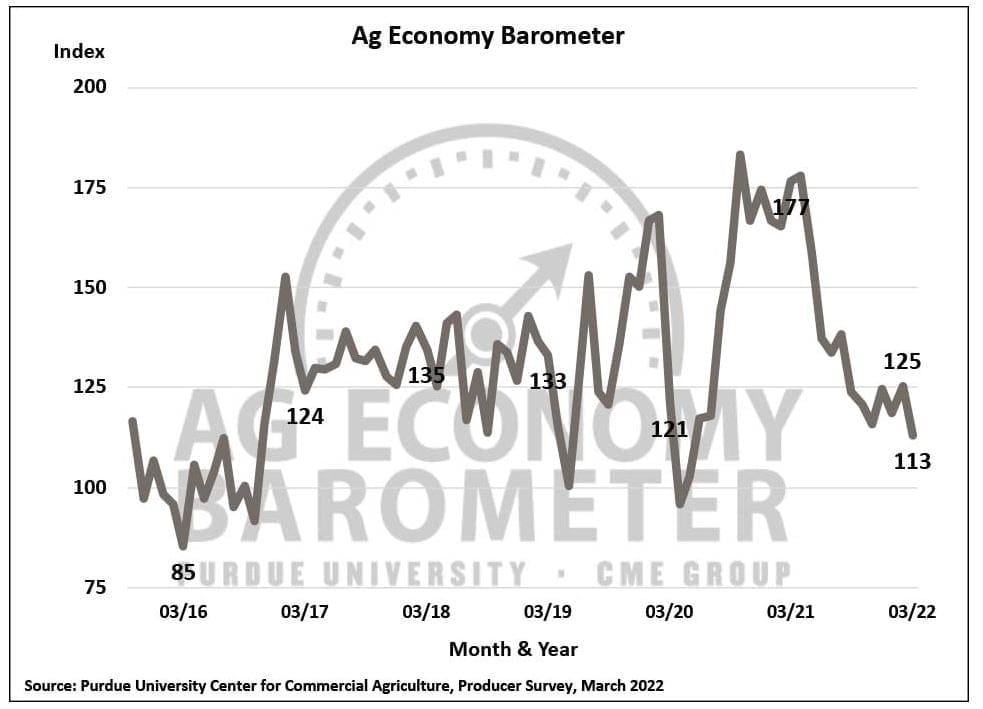
Concerns about how the war in Ukraine will impact future crop and livestock prices are among the top reasons a Purdue University agriculture economic index has fallen.
The Purdue University/CME Group Ag Economy Barometer fell to 113 in March, down 12 points from February and 36% lower than March 2021. It marked the weakest farmer sentiment reading since May 2020, in the early days of the pandemic, Purdue researchers said.
The decline was driven by producers' weaker perceptions of both current conditions in the agricultural economy and expectations for the future. The Index of Current Conditions declined 19 points to 113, down 44% from March 2021, and the Index of Future Expectations declined 9 points to 113, down 31% from the same time last year.
Concerns about the war's impact on input prices and input availability on farming operations were among the top issues for producers responding to the March survey and was a major factor in this month's decline in sentiment, researchers said. The Ag Economy Barometer is calculated each month from 400 U.S. agricultural producers' responses to a telephone survey.
The March survey, which was conducted between March 14 and March 18, provided the first opportunity to ask producers how they expect the war in Ukraine to impact U.S. agriculture. Producers overwhelmingly said they expect input prices to be most affected (63% of respondents), followed by crop prices (33% of respondents), and livestock prices (3% of respondents).
Responding to a related question, 19% of respondents chose “availability of inputs” as their biggest concern in their farming operation this year, which was equal to the percentage of producers who chose “lower crop and/or livestock prices” as their biggest concern.
A total of 57% of respondents expect farm input prices to rise by 20% or more and 36% think input prices will rise by 30% or more. And, 27% of producers say they've had difficulty purchasing crop inputs for the 2022 crop season.
Producers report that supply chain problems persist across a wide range of inputs with herbicides, fertilizer, and farm machinery parts posing the most problems.
When producers think about how their farm will fare financially in 2022, it's clear they do not expect commodity price strength to offset the dramatic rise in farm production costs they are experiencing, researchers said. Producers continue to say they expect their farm's financial performance to decline in 2022 compared to 2021.
The complete March index is available on Purdue University’s website dedicated to the ag barometer.



